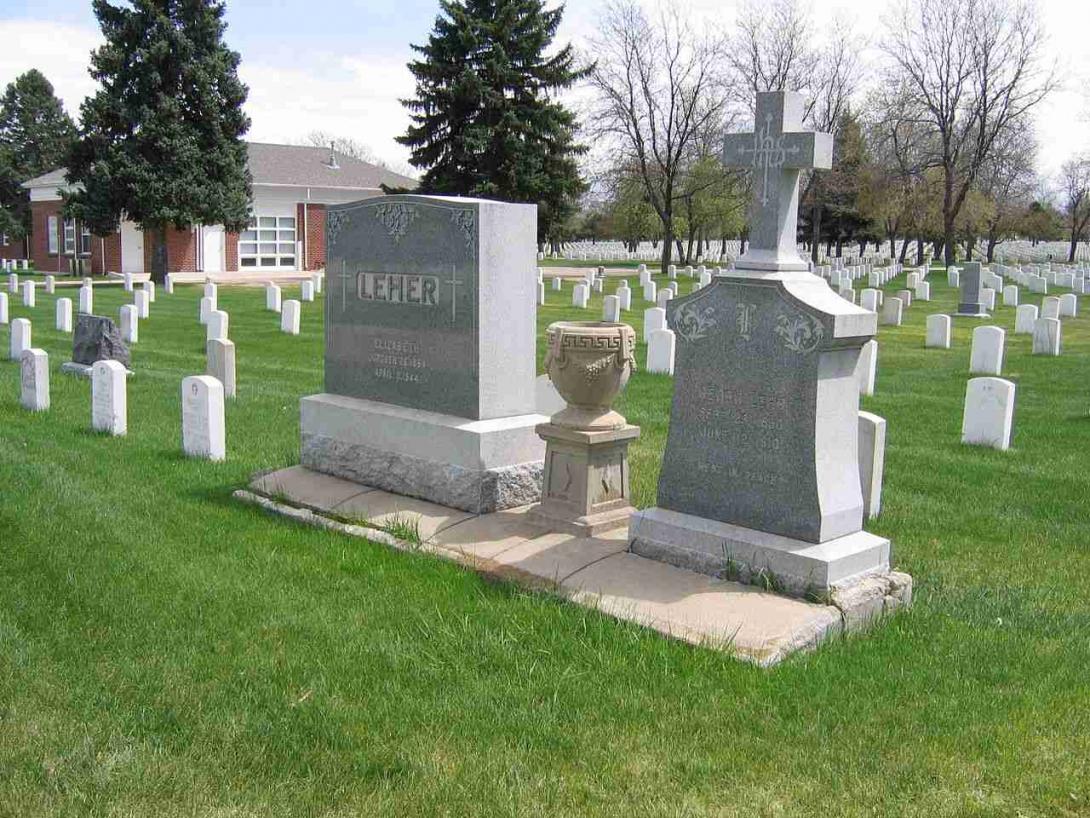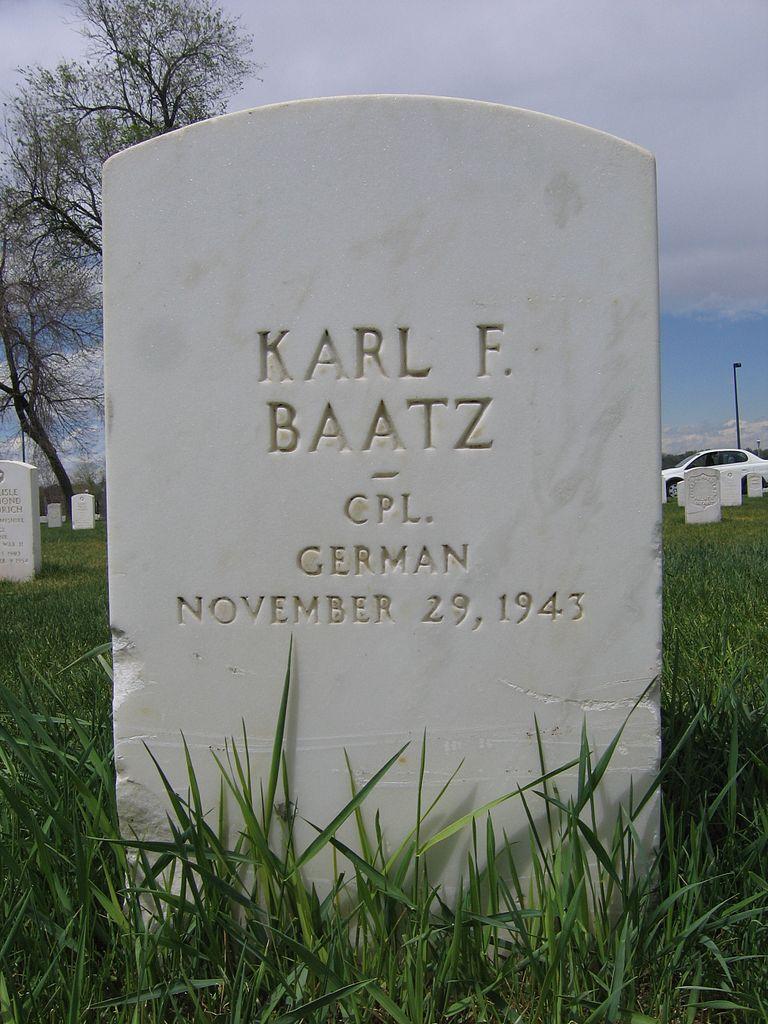Fort Logan National Cemetery
Full Article
Fort Logan National Cemetery is located at the intersection of South Sheridan Boulevard and West Kenyon Avenue in southwest Denver. It started in 1889 as the small post cemetery at Fort Logan. The fort was closed after World War II, but in 1950 the cemetery became the seed of a newly designated national cemetery occupying part of the fort’s old property. Now managed by the Department of Veterans Affairs, the cemetery covers 214 acres and has more than 100,000 interments, including memorials for one German prisoner of war, seven Buffalo Soldiers, and three recipients of the Congressional Medal of Honor.
Origin and Early Years
As the American West filled with settlers in the late nineteenth century, the US Army closed many of its far-flung frontier posts and consolidated them into larger installations near urban centers. In the late 1880s, Denver boosters and US Senator Henry Teller successfully lobbied for one of the large new posts to be located near Denver, with Teller introducing a bill to authorize the post and Denver business leaders donating money to acquire the land for it.
President Grover Cleveland signed the legislation approving Denver’s fort in February 1887. The next month, army officials led by Lieutenant General Philip Sheridan came to town to survey potential sites. Sheridan chose Johnson Ranch, a parcel near Bear Creek about seven miles southwest of the city. The land was purchased and donated to the army, and the first troops—the Eighteenth Infantry under Major George K. Brady—arrived in October.
Construction of the post started in 1888, and the Denver & Rio Grande Railroad soon extended a spur line to what was officially known as the “Camp Near the City of Denver.” Locals referred to it as Fort Sheridan, after the general who had helped pick the location, but when Sheridan asked for a fort north of Chicago to be named after him, the army had to come up with a different name for Denver’s post. On April 5, 1889, the installation was officially named Fort Logan after John Alexander Logan, the Grand Army of the Republic leader who was instrumental in making Memorial Day a national holiday. Sheridan’s name became attached to the boulevard on the fort’s west side.
Fort Logan’s first burial occurred in June 1889, when Mable Peterkin died at the post. Peterkin was the daughter of a Seventh Infantry private stationed at the fort. She was buried in the fort’s northwest corner, where a three-acre post cemetery took shape. Over the next six decades, the post cemetery grew to 376 burials, including seven Buffalo Soldiers who were stationed at the fort in the late 1890s.
In 1909 Fort Logan turned into a recruiting depot, and in 1940 it became a subpost of nearby Lowry Army Air Base. It was used to train clerks and process army personnel, and during World War II it also served as a convalescent hospital and prisoner of war camp. One German prisoner, Karl Baatz, died at the camp and was buried in the post cemetery.
National Cemetery
At the height of its activity during World War II, Fort Logan had 5,500 people spread across 973 acres and 200 buildings. As the military downsized after the war, the fort was declared to be surplus. In 1946 the army transferred most of the fort’s buildings and land to the Veterans Administration (VA; now the Department of Veterans Affairs), which used them as a temporary hospital until a new VA hospital was completed in Denver in 1951. In the 1950s, the VA sold some of its Fort Logan land to developers but continued to occupy more than 300 acres until 1960, when it deeded its remaining land to the state of Colorado for the construction of a new state hospital (now the Colorado Mental Health Institute at Fort Logan).
Meanwhile, soon after World War II, Denver boosters successfully worked with Colorado’s two senators, Eugene Millikin and Edwin Johnson, to get the northwest portion of the old Fort Logan designated as a national cemetery. On March 10, 1950, the US Army dedicated the land as Denver National Cemetery, while the original 3.2-acre post cemetery became known as Denver National Cemetery North. After complaints about the confusing new name, it was renamed the Fort Logan National Cemetery in 1952.
For the next two decades, the cemetery was under the jurisdiction of the Army Quartermaster Corps. The army built a gate for visitor access from South Sheridan Boulevard via Denver Drive in 1958 as well as several support buildings. During these years, the cemetery occupied only a small portion of its acreage as it slowly developed outward from the old post cemetery. The army leased the empty land to a local rancher for grazing. By 1966 the cemetery had nearly 7,000 burials.
In 1973 the National Cemeteries Act transferred Fort Logan (and most other national cemeteries) to the US Veterans Administration. At the time, the US Army had recently completed a new master plan for the cemetery’s future development. The VA implemented most of those plans over the next twenty years, completing a new reservoir, main gate, entrance road, and administration building (later converted to the Public Information Center). In 1976 the VA also added seventy-seven acres on the cemetery’s east side, making its current boundaries.
 Today Fort Logan National Cemetery has about 125,000 interments of veterans from all major American conflicts from the Civil War to the early twenty-first century. Some of the most notable burials include Navajo Code Talkers Corporal Edward Leuppe and Private John Werito, who served in World War II, and Congressional Medal of Honor recipients Major William Adams and Sergeant Maximo Yabes, who served in Vietnam. In 2016 the cemetery was listed on the National Register of Historic Places.
Today Fort Logan National Cemetery has about 125,000 interments of veterans from all major American conflicts from the Civil War to the early twenty-first century. Some of the most notable burials include Navajo Code Talkers Corporal Edward Leuppe and Private John Werito, who served in World War II, and Congressional Medal of Honor recipients Major William Adams and Sergeant Maximo Yabes, who served in Vietnam. In 2016 the cemetery was listed on the National Register of Historic Places.






